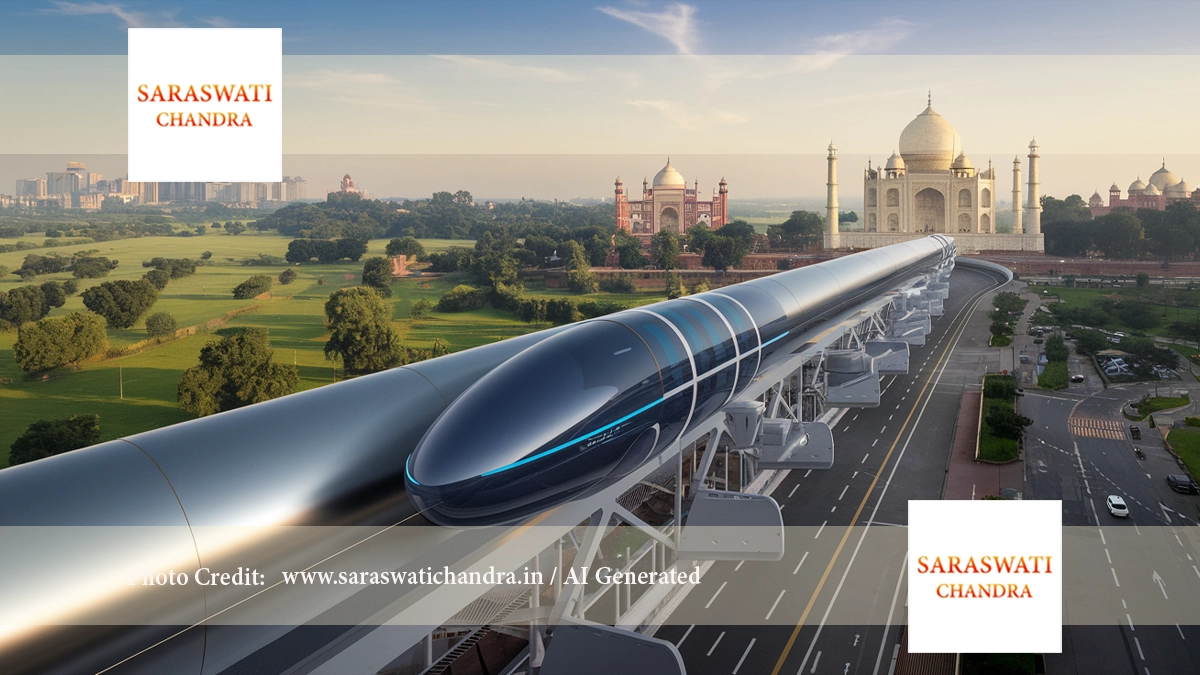When Can We Expect the First Hyperloop in India? Feasibility and Challenges Explained
The concept of the hyperloop — a high-speed, sustainable, and futuristic mode of transportation — has captured the imagination of many. With the rapid pace of technological advancements, people are wondering when India will experience its first hyperloop system. This article delves into the feasibility of hyperloop in India, the challenges, and potential timelines for its arrival.
What Is Hyperloop and How Does It Work?
The hyperloop is a proposed transportation system where pods travel through low-pressure tubes at incredibly high speeds, using magnetic levitation and air compressors. It promises speeds of up to 1,200 km/h, significantly reducing travel times between major cities. Unlike traditional trains or planes, the hyperloop eliminates friction, making it a highly energy-efficient alternative.
Timeline for the First Hyperloop in India
India has shown keen interest in adopting hyperloop technology as part of its future transportation plan. Several government bodies and private companies have already explored its feasibility in India. In 2018, Virgin Hyperloop One partnered with the Indian government to develop a route between Mumbai and Pune, promising to cut travel time from 3 hours to just 25 minutes.
Experts have predicted that the first hyperloop could be launched in India within the next 5 to 7 years, provided that regulatory approvals, infrastructure development, and technological challenges are addressed. However, it’s important to note that this timeline could change depending on various factors.
Feasibility of Hyperloop in India
The feasibility of hyperloop in India depends on multiple factors:
- Infrastructure Requirements: Building the infrastructure for a hyperloop system involves constructing long stretches of low-pressure tubes, which can be costly and complex. India’s dense population and varying geography pose challenges in terms of land acquisition and construction.
- Technology Integration: While hyperloop technology has been successfully tested in small-scale trials, its application in India requires significant adaptation. The system must be integrated with India’s existing transportation infrastructure and technology to make it practical for mass use.
- Safety and Regulations: The safety of passengers is a top priority. As a new mode of transport, hyperloop will need to undergo extensive testing and certification processes. Regulatory bodies in India will need to ensure that the system meets all safety standards before it can be launched for public use.
- Cost and Funding: The initial investment for building a hyperloop system is enormous. While government support and private investment are expected, funding will be a critical hurdle. The costs associated with developing the required infrastructure and technology may delay its widespread implementation.
- Environmental Impact: India is increasingly focusing on sustainable solutions for its transportation needs. Hyperloop offers a greener alternative to traditional transport modes, which aligns with India’s environmental goals. However, its environmental impact during construction and operation must be thoroughly assessed.
Potential Routes for Hyperloop in India
India has several cities where a hyperloop system could significantly improve travel times. Some of the most promising routes include:
- Mumbai to Pune: As mentioned earlier, this route is already in the works, and hyperloop could reduce travel time from 3 hours to just 25 minutes.
- Delhi to Agra: A potential hyperloop route connecting the capital city of Delhi to the popular tourist destination of Agra could revolutionize tourism in India.
- Bangalore to Chennai: Another route being explored is between Bangalore and Chennai, two of India’s largest tech hubs. A hyperloop here could improve connectivity for business and travel.
Challenges to Overcome
While the potential benefits of hyperloop technology in India are immense, several challenges need to be overcome:
- Land Acquisition: One of the most significant hurdles will be acquiring the land required for hyperloop infrastructure. Since India’s land is densely populated, obtaining land without disrupting local communities will be challenging.
- Technological Adoption: India’s existing transportation infrastructure will need to be upgraded to accommodate hyperloop systems, including stations, maintenance facilities, and power supply systems.
- Public Perception: As with any new technology, the hyperloop will need to gain the trust of the public. People must feel confident in its safety, reliability, and cost-effectiveness before embracing it.
Conclusion
India’s dream of having its own hyperloop system may take a few more years to materialize, but the potential for this futuristic transport system is undeniable. The feasibility of hyperloop in India is growing, and as more pilot projects are implemented, the technology could soon become a reality. By overcoming regulatory, infrastructural, and technological challenges, India could lead the way in adopting this innovative mode of transport, revolutionizing the way people travel within the country.
